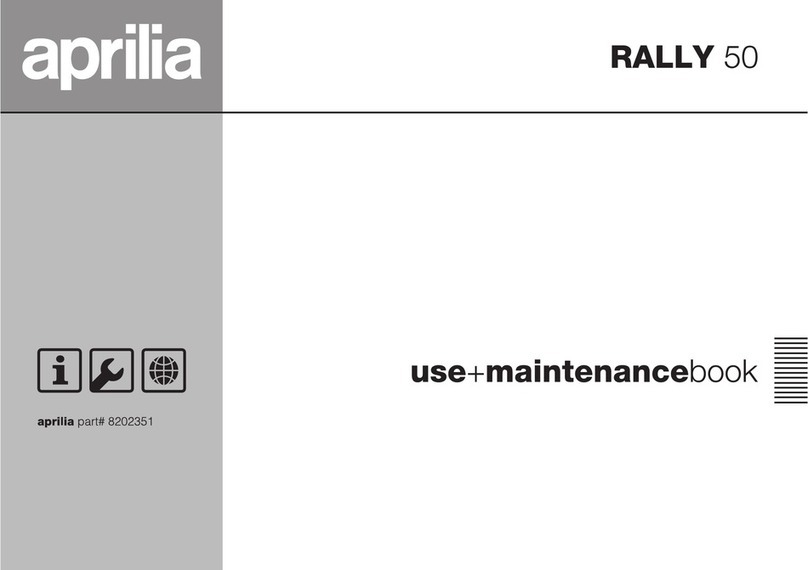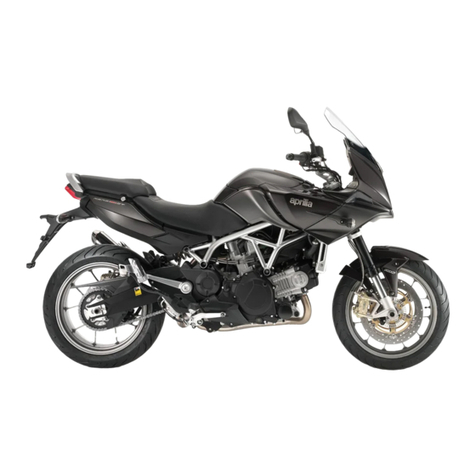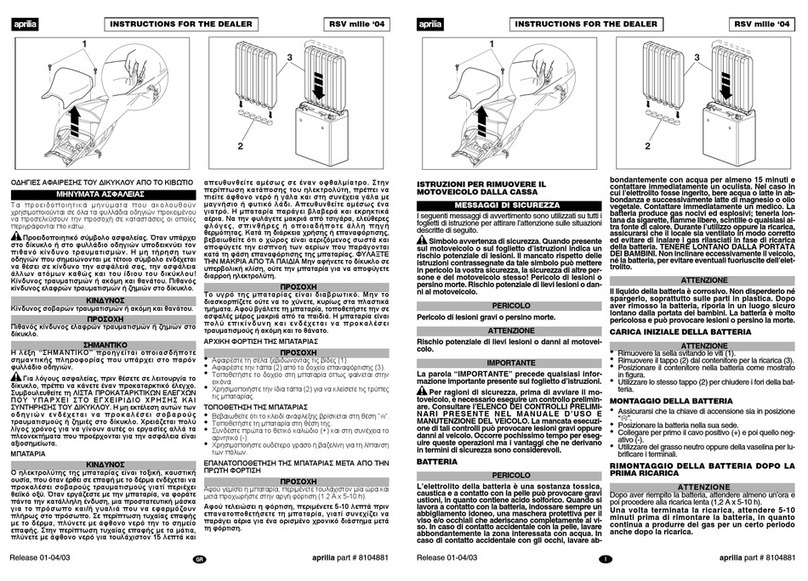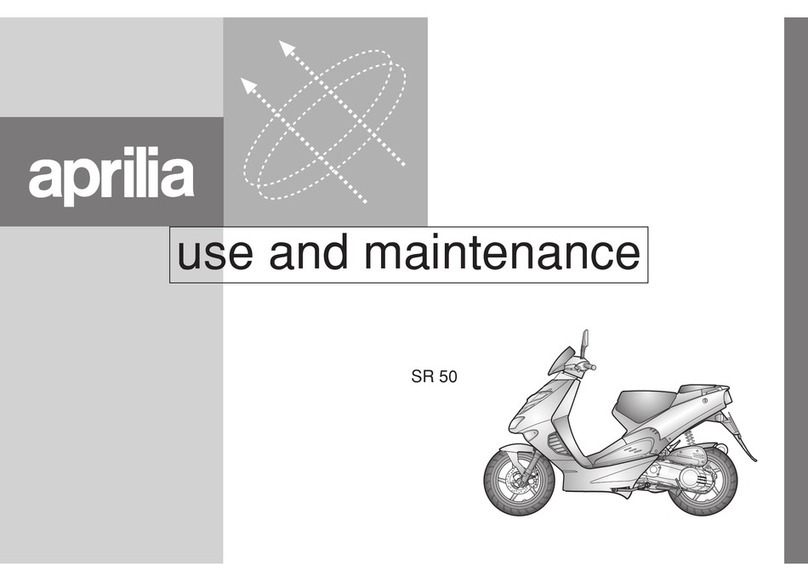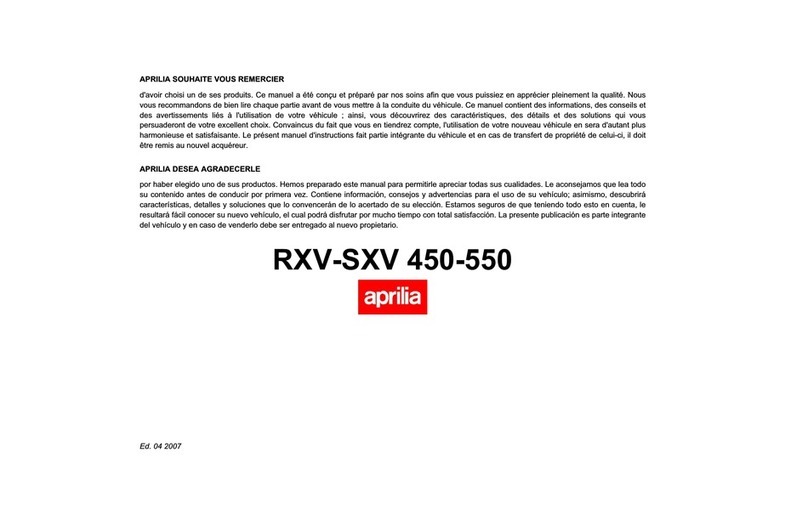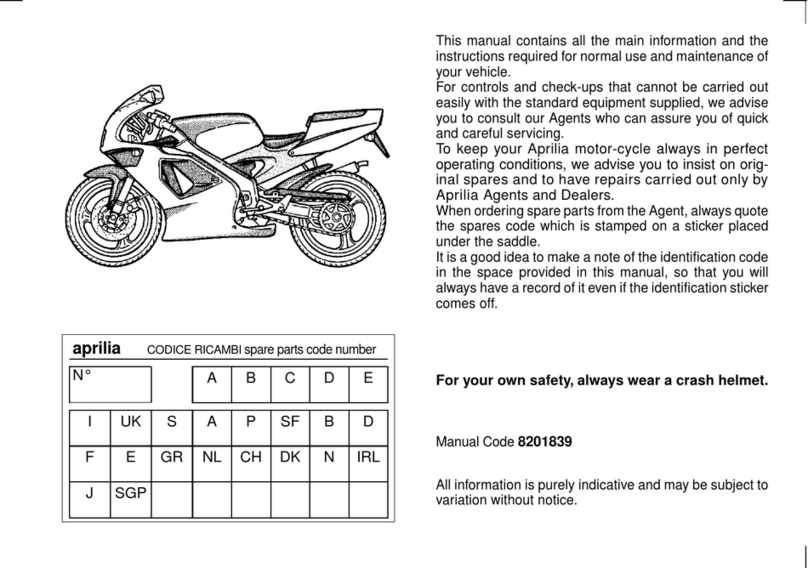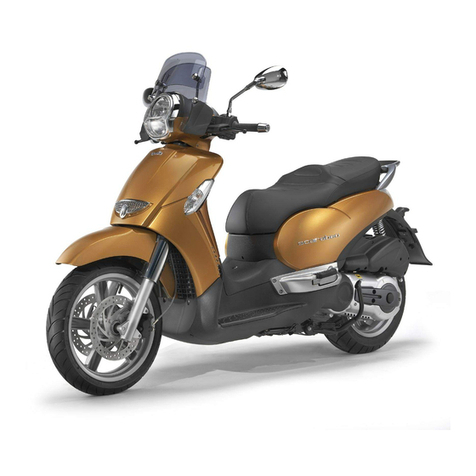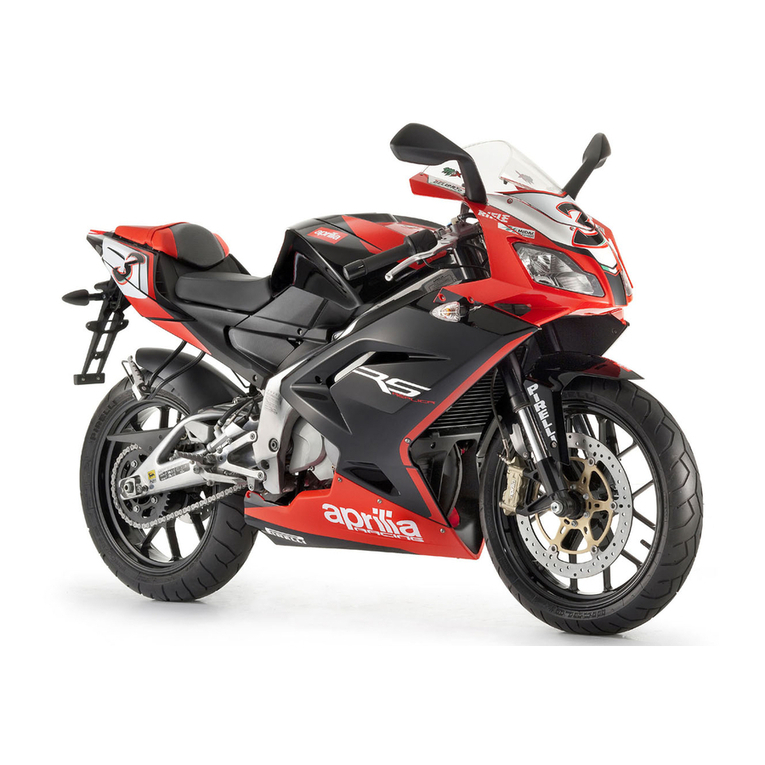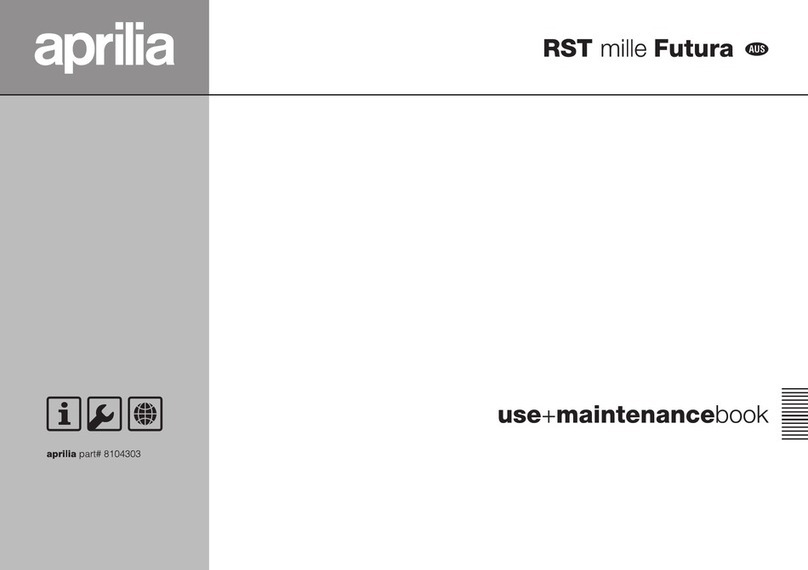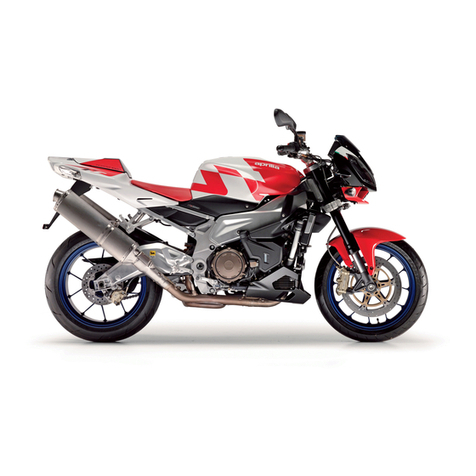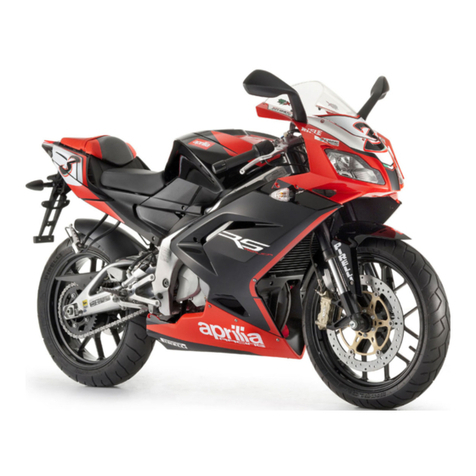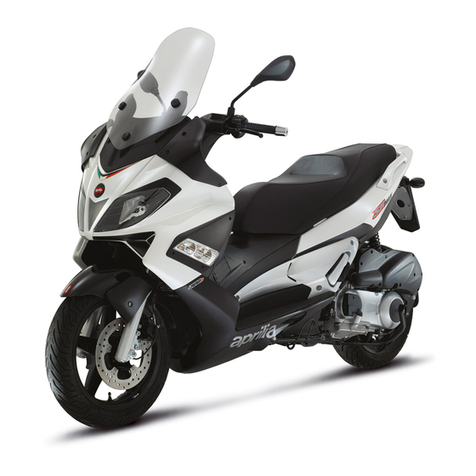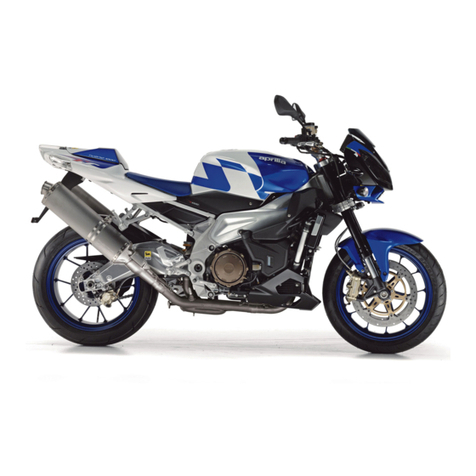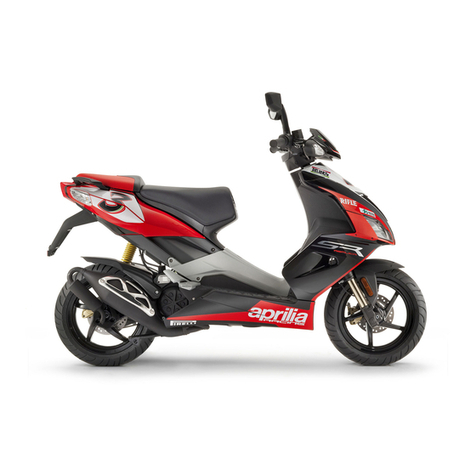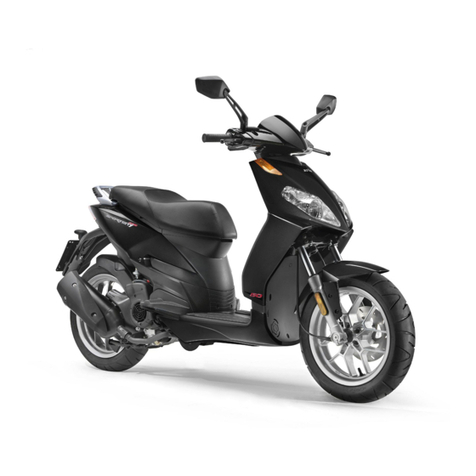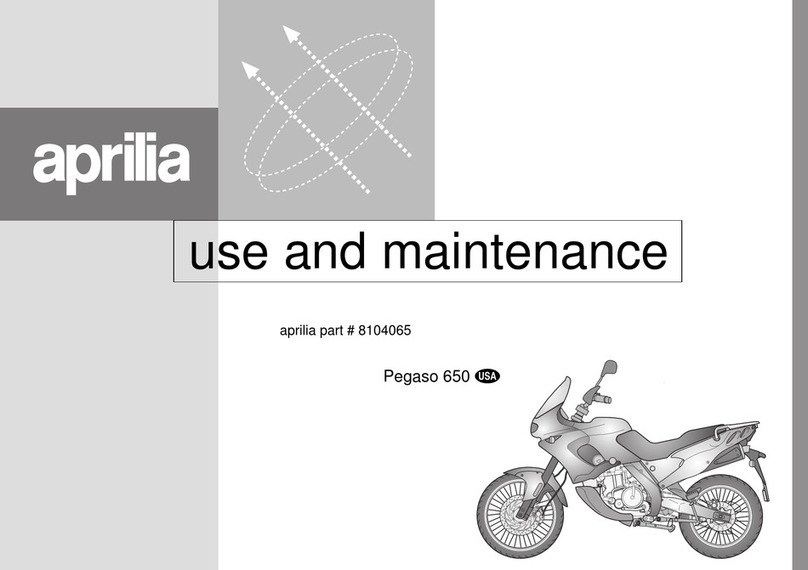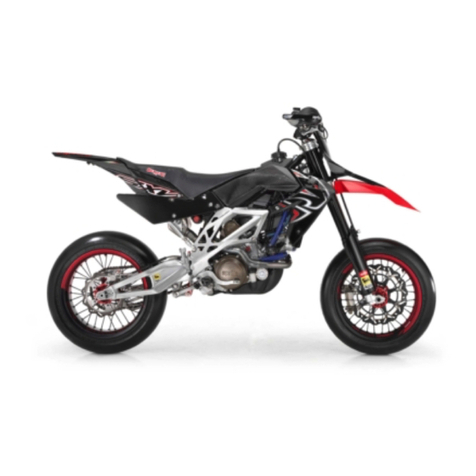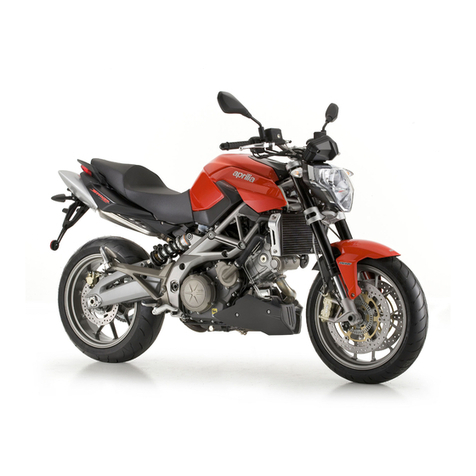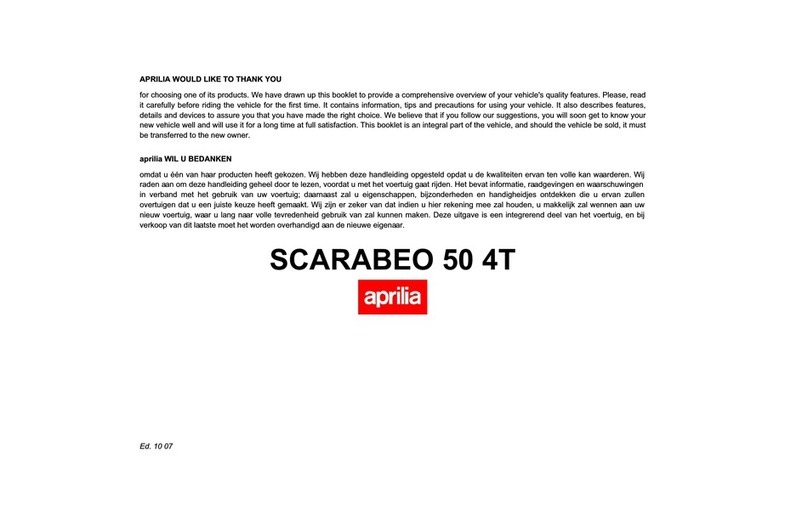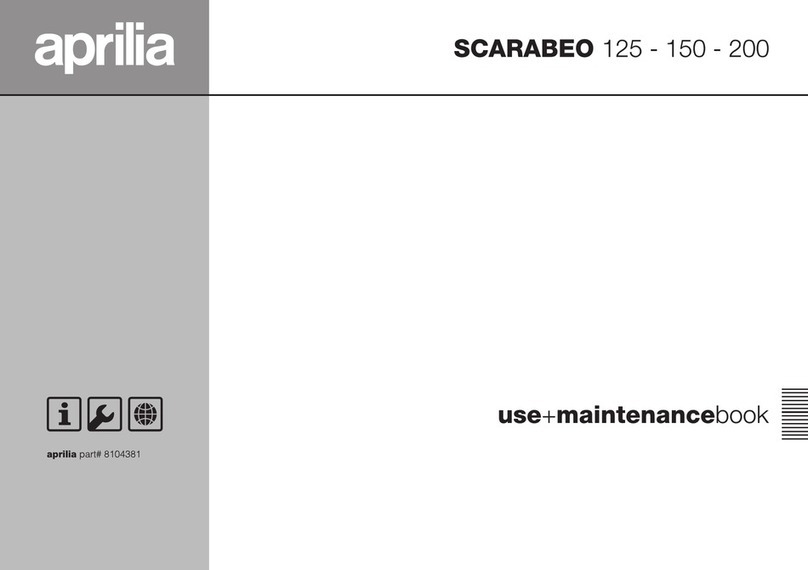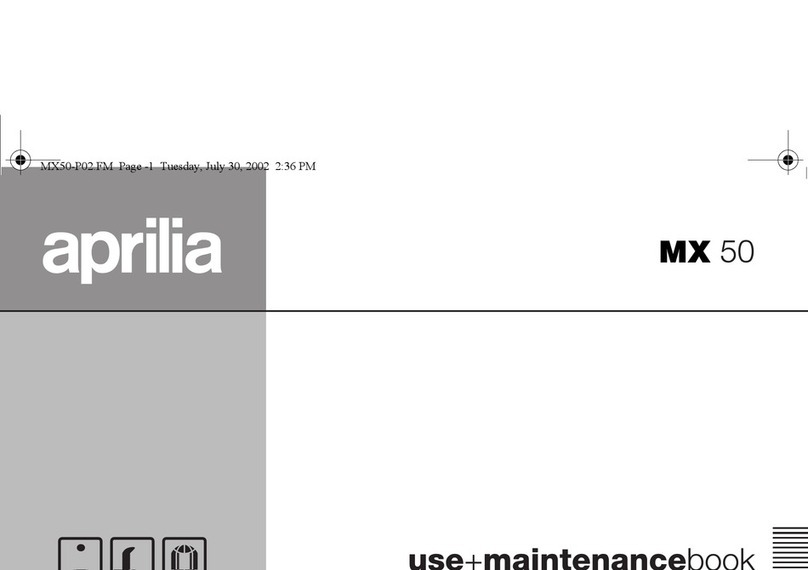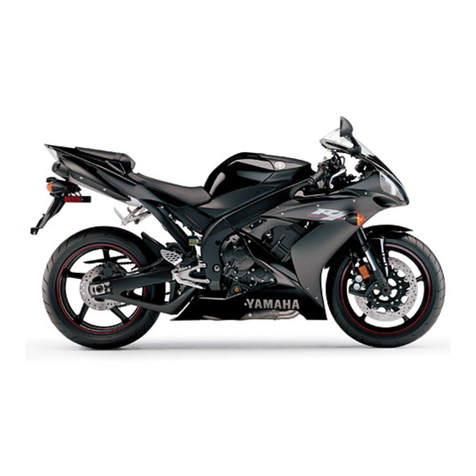
68 -
use and maintenance RSV mille
through the turn. Avoid braking at the
last moment. This can cause you to
lose control of your vehicle.
If the brakes are operated continuously
on downhill grades, the discs and pads
will overheat, reducing the braking effi-
ciency. Use engine compression and
downshift to retard your vehicle while
going downhill. Use the brakes as little
as possible to maintain a safe speed.
Never coast downhill with the engine off
and/or the clutch disengaged or the
transmission in neutral.
On roads that are wet or covered with
snow, ice or mud, ride very slowly,
avoiding braking or accelerating or ma-
neuvering quickly. Hold the handlebars
firmly.
Failure to heed these warnings can
cause an upset with subsequent seri-
ous injury or death.
Pay very close attention to any obsta-
cles or variations of the road surface.
Uneven roads, rails, manhole covers,
painted traffic stripes, traffic dots all be-
come slippery when wet. Avoid particu-
larly steel plates which are sometimes
used during road maintenance. They
become more slippery than ice once
they are wet by rain. If you must ride on
such surfaces, decrease your speed
and operate the throttle, brakes and
steering very gently.
Always use the turn signals any time
you intend to change lanes or change
direction, and avoid sudden or abrupt
turning.
Switch off the direction indicators as
soon as you have changed direction.
Overtake and pass only with care, espe-
cially in rainy weather when a water
cloud created by larger vehicles reduces
visibility and the slip stream could cause
you to lose control of your vehicle.
25..).').
The internal parts of the engine and trans-
mission must be properly run-in to ensure
their long life and dependable operation.
If possible, while breaking in your vehicle,
ride on hilly roads and/or roads with many
curves so that the engine and transmis-
sion undergo lots of speed changes. It is
also important that, during the run-in peri-
od, the suspension and brakes be treated
gently to allow the mating parts to bed.
Therefore, avoid hard braking, high
speeds or very bumpy roads during the
break in period.
NOTE Only after the first 937 mi (1500
km) of running-in you can expect the best
performance from the vehicle.
During break in, obey the following rules:
◆Do not open the throttle abruptly or fully
at low engine speed. This rule applies
even after break in has been completed.
◆During the first 62 mi (100 km), apply the
brakes with caution, avoid sudden and
prolonged braking. This ensures correct
bedding in of the pads on the discs.
◆During the first 625 mi (1,000 km), never
exceed 6,000 rpm.
aWARNING
After the vehicle has been operated for
625 mi (1,000 km) perform the “checking
operations”shown in column “After run-
ning-in”of the REGULAR SERVICE IN-
TERVALS CHART, see p. 74. Rectify any
faults found. Failure to heed this warn-
ing could lead to damage to your vehicle
or engine seizure or other malfunction
which could cause an upset and lead to
serious injury or even death.
◆Between the first 625 mi (1,000 km) and
937 mi (1,500 km) drive more briskly,
changing speed and using maximum ac-
celeration for only a few seconds. Never
exceed 7,500 rpm.
◆After the first 937 mi (1,500 km) if you
have followed the above break in sched-
ule, the engine should be fully broken in,
and will deliver maximum performance.
However, never exceed the maximum al-
lowed rpm (10,500 rpm).
Engine maximum rpm
for the running-in
Mileage mi (km) Max. rpm
0 –625 (0 –1,000) 6,000
625 –937
(1,000 –1,500) 7,500
over 937 (1,500) 10,500
Usa-02.fm Page 68 Thursday, December 16, 1999 11:04 AM
